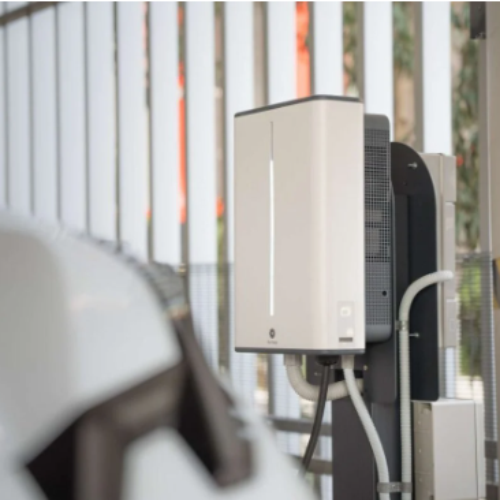As the energy storage sector in the UK changes, with increasingly large installations and an increasing need for frequency response, energy trading is coming into its own.
Aaron Lally, head energy merchant at tech firm Kiwi Power talked to Current± about how companies are targeting trading, the dynamics of the battery industry and how COVID-19 is affecting it.
In the medium term, how is Kiwi Power working to produce value from trading?
We’re currently operating a lot of batteries in the Fast Frequency Response (FFR) market. But at the same time, what we’re doing is running some test cases on the trading side.
Everyone’s got the same spiel, they’ve got machine learning algorithms that are predicting short term UK electricity prices, both in the wholesale and the balancing mechanism. Everyone’s kind of sitting there doing that with varying degrees of success.
But what we’re actually actively doing now is, we’ve got an asset that we’ve had for a period of time and it is actively being traded across both markets using our software. It sounds simple but we are the only player doing that dynamically currently. Some of this maybe lower revenue than FFR, but what we’re trying to do is prove the business case for trading and build robust software around that.
As we’ve seen in the energy storage game generally, everyone’s kind of looking at each other saying, ‘Okay, well, where do we go for the incremental value?’ Maybe before the spike in FFR prices in October, everyone was pitching trading really hard, right? At that time, we were still pitching FFR and we did quite well in the winter.
But now we’re very much saying okay, well, FFR is not going to last forever. We need to prove to our clients when we walk into a room with them in six months’ time or prospective clients and say, ‘okay, the FFR value is no longer there, where’s the next revenue stream?’ We want to be able to point to six months track record of trading and saying, we’ve been operating the balancing mechanism and the wholesale trading market for the last six months, we’ve made x revenue.
Whereas I feel a lot of people in the space are going to walk into the same rooms, six to 12 months down the line and say, we can trade, this is what we would have done theoretically over the last six to 12 months.
So I guess what we’re doing that is slightly differently to everyone else, is we’re actually running real world test cases. And we’re doing relatively well, so that’s good. But at the same time, we’d always want to do better.
Is there anything standing in the way of energy trading?
Yeah, there’s a few things really. There’s the traditional access to markets for smaller players, and that comes in the form of high fee exchanges, high collateral and margins that you have to pledge to exchange.
So you’ve got to pledge collateral to trade wholesale electricity in the UK and the continent, and you’ve got to pledge hundreds of thousands of pounds to exchanges to allow you to take positions in the market. That’s fine for your big companies like your EDFs, I guess because they’ve got multiple different exposures, multiple different assets. And they consider that as a sunk cost, they can put millions of pounds in.
Whereas for the smaller companies, especially in the current environment, are looking at it thinking, ‘Okay, well, if we pledge £300,000/400,000 to an exchange to trade, that’s sunk money, that’s cash we’ve got to keep with them.’ So it’s kind of it’s quite a big cost to businesses generally.
What are the medium to long term dynamics of the battery business likely to be?
It’s proving value. So it’s proving you can trade these assets and extract value out of them, as there’s only so much time that they’re going to be supported through ancillary service contracts.
At the same time, as people build these assets it’s very easy to access the ancillary service market, so there’s no real barrier to entry. So the price is going to tend to zero really, so the edge in the medium and long term for energy storage assets is having a great trader and software who can extract the most possible value out of the asset in the traded markets. They’re the only markets that are deep enough to be able to handle gigawatts of storage really.
Given the change in demand pattern created by COVID-19, are we seeing a change in trading?
Yeah, so if anything we’re getting dispatched a lot more. I feel that is more because everything we do is fully automated, whereas with a lot of the bigger and more traditional power generation it’s very tough to run the portfolio from home or remotely, which is why they will work 24/7 shift desks that are in the office.
The amount you’re getting per cycle is slightly reduced but at the same time the amount of cycles you’re doing per day is skyrocketing in the balancing mechanism.
That small reduction in the amount you’re getting for your dispatching, is more than compensated for by the amount of times they’re actually dispatching you overall.





